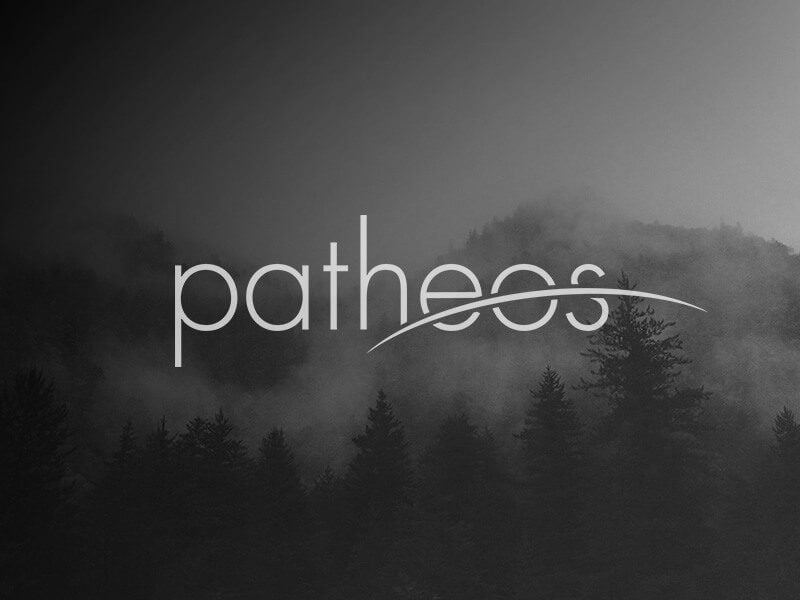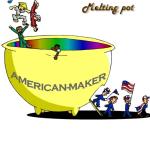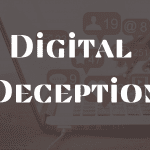What follows is a lot of information. I think it's helpful to have it all in a single narrative. For sources, please visit www.mypetgoat.50megs.com
The tragedy of 9/11 was a natural
outgrowth of Bush’s practice as a businessman, specifically, his dependence on
Saudi Arabian investors, a pattern that began when he was a young entrepreneur
in the late 1970’s. This pattern of dependence, which grew into an open
invitation for Saudi bankers to invest in anything that caught the Bush
family’s eye, clouded his presidential judgment, causing him to ignore obvious
signs of Saudi complicity in acts of terror around the globe. If Bush were to
have properly investigated growing Al Qaeda chatter in the early days of his
administration, Saudi connections to Al Qaeda would have come to light. But
then, so would Bush’s career-long choice of seedy business partners.
So instead of preparing for a
terror attack in 2001, Bush did what he’d done throughout his entire business
career. He waited for the Saudis to bail him out. In this instance, that would
require the Bin Laden family pulling in the reigns on their wayward son Osama,
known to be mucking about the hills of Afghanistan planning nasty things.
Thus, Bush did nothing until the twin towers fell. After the attacks, Bush
continued to cover his tracks in the following ways:
-
·
Spiriting members of the Bin Laden family out of
the country in the days following the attack -
·
Nixing a congressional investigation of 9/11. -
·
Refusing to freeze the Bin Laden family banking
assets in this country. -
·
Refusing to release documents to 9/11
investigators that would compromise Bush and his investors. -
·
Enlisting the services of the Bush family law
firm Baker Botts to defend the Saudis against a trillion-dollar lawsuit by 9/11
family victims. -
·
Releasing a version of his Air Force discharge
records that blacked out the name of James Bath, Bush’s lifelong friend and
Saudi intermediary.
Please note that when I say Saudi
connections, I’m referring to Saudi banking conglomerates, not the government,
although, just as in this country, the distinctions tend to blur.
This charge is based on articles
and accounts that have appeared in all media around the country. Viewed
separately, everything in this letter is common knowledge. I’m merely
connecting the dots.
Alright, then. Let’s start at the
beginning.
After graduating from Harvard Business
School in 1977, Bush organized his
first company, Arbusto Energy, Inc., with $17,000 of his education trust, and
$50, 000 from James Bath, who was the sole U.S. business representative for
Salem Bin Laden. Salem
was head of the bin Laden family and one of Osama Bin Laden’s seventeen
brothers. It is well-documented that Mr. Bath, who trained as a pilot alongside
Mr. Bush in the early 1970’s, had little money of his own, so it’s fairly
certain that that initial $50,000 investment came from Salem Bin Laden. Bush
continued to raise seed money for his company up into the mid-1980s with the
help of his uncle, but, as the company’s CFO pointed out, “We didn’t find much
oil and gas.” Thus, investors got about 20 cents on the dollar, and in 1984,
Bush renamed his company Bush Explorations, and merged with a firm called
Spectrum 7.
Spectrum 7 owners made Bush Jr.
the president and gave him 13.6% of the parent company's stock. Despite the
Bush name on the company directory, they began losing lots of money. In 1986,
while Bush Jr. was still at the helm, Spectrum 7 was purchased for $2 million
by Harken Energy Corporation. Asked why he bought the floundering company,
Harken founder Phil Kendrick explained, "His name was George Bush."
Bush Jr. quickly assumed a seat on Harken's board of directors.
The Harken deal was one of the
biggest breaks of Bush's life, but was also a reprise of a troubling pattern.
The company began losing money, and was soon in need
of a big cash infusion. Yes, it was time to break out to falafels. In 1987,
astute Saudi billionaires sought to cement their relationship with the upwardly
mobile Bushes, so banker Khalid bin Mahfouz arranged for the purchase 17% of
Harken Energy in 1987, as well as provide a $25 million cash infusion. Bush Jr.
was offered $227,000 worth of
Harken stock, and a spot on the board of directors. He made $80,000 to $100,000
a year, and borrowed $180,375 from Harken, which, according to 1989-1990 SEC
records, was “forgiven” by the company. But this new top stockholder, Khalid
bin Mahfouz, was no ordinary Saudi banker. His father
founded Saudi Arabia’s
first bank in 1950, the National Commercial Bank (NCB), which Khalid inherited.
The bin Mahfouz empire is vast, covering the major sectors in Saudi Arabia and abroad, including
banking, agriculture, pharmaceuticals, and telecommunications. The influence Mahfouz placed in
Harken’s hands was enormous, so in 1990, despite having no international
drilling experience Harken won an exclusive drilling contract with the Mideast
country of Bahrain,
beating out the international oil conglomerate Amoco. And so, there in the
boardrooms of Midland, Texas, the cannot-lose partnership of
Bush family connections and Saudi money was consolidated.
Despite Saudi support, Harken’s losses continued, so in
1989, the company hid losses by selling its subsidiary, Aloha Petroleum to
Harken investors, who would borrow the money from Harken itself. This single
sale hid $10 million in lost revenue. If the practice sounds familiar it
should. Enron employed this same Bush-refined phony selling scheme ten years
later, shattering the nest egg investments of thousands of Americans. The SEC
quickly saw through the scheme, and required Harken to restate its earnings
downward. But before the public caught wind of the losses, Bush sold two-thirds
of his Harken shares, 212,000 at $4 apiece, and didn’t inform the SEC of the
sale for eight months. This gap is significant, because a few weeks after Bush
(who sat on Harken’s auditing and restructuring committees) dumped his shares,
the company reported a loss of $23 million. So, years later, in the wake of the
Enron scandal, when Bush decried corporate schemes that used “artful and
intricate financial arrangements,” he knew what he was talking about. He’d used
them all.
Meanwhile, officials leaving the Reagan and Bush
administrations needed a way to make good on their connections. While American
law prevents ex-politicians from lobbying just after leaving their posts, they
are allowed to encourage investors to invest in funds that buy up companies
that could turn a profit with a little tweaking. And just as the Reaganites and
Bushies wanted something sink their teeth into, the need arose to create a
comfortable environment for encouraging the Saudis to invest their billions.
What could provide all this? A private equity portfolio represented by past
administration officials who could virtually guarantee government contracts for
companies that invested in the portfolio. Thus, the Carlisle Foundation was
born.
Saudi banker Khalid Mahfouz stepped into the Carlisle
Foundation with both feet. He was now Director and top shareholder of Bank of
Commerce and Credit International. a financial conglomerate which, as of 1988, had
four hundred branches in 73 countries. From its
inception, though, the BCCI adopted the practice of ‘loan back,’ which
allocated large loans without a real guarantee, in return for investments in
the company. This way, the main loan beneficiaries were the shareholders
themselves. The BCCI went
on to defraud depositors around the world of $10 billion, the largest fraud in
banking history. Its management (including Mahfouz) would later
be convicted of money laundering, bribery,
support of terrorism and arms trafficking. But all that
would come later. In the meantime, BCCI head Khalid Mahfouz looked to the
Carlisle Foundation to provide ways to quickly invest incredible amounts of
freshly laundered money. The Bush family and their allies were there to oblige.
In the Early 1990’s, the Carlisle Foundation was just
getting going. Its board initially included Frank C. Carlucci,
former secretary of defense under Ronald Reagan; Richard G. Darman, former
director of the Office of Management and Budget under George H.W. Bush; and
John Sununu, former White House chief of staff. And in 1990, George Bush Jr.,
fresh from the Harken debacle, joined the board of directors of one of the
Carlyle Group’s subsidiaries, Caterair, where he remained until 1994.
Then, as Bush Sr.’s, tenure
at the White House came to an end, both James H. Baker and the ex-president
took their place on the Carlisle Foundation board. Bush Sr. worked his
connections like a band conductor. His meeting with the Saudi crown prince was
followed by a yacht cruise and private dinners with Saudi businessmen. Mr. Bush
led Carlyle's successful entry into South Korea,
the fastest-growing economy in Asia. After his
meetings with the prime minister and other government and business leaders,
Carlyle won a tough competition for control of KorAm, one of Korea's few healthy banks. Thus,
the Saudis had the money, and the Carlisle Foundation, headed by Bush allies,
provided companies worth investing in.
But like any marriage,
interdependence can be a thorny process. Saudi Arabia is not just a haven
for bankers. It’s also the home of Wahhabism, the most militant form of Islam.
It is Saudi missionary teachers, mosques and schools that have spread Wahhabism
throughout the world. Riyadh has pumped tens of
millions of dollars into Islamic schools in America alone.
The problems grew. In the 1990’s,
Al Qaeda began targeting Americans and American interests. Osama bin Laden had
claimed credit for the attack on U.S. soldiers in Somalia in October 1993,
which killed 18; for the attack on the U.S. Embassies in Kenya and Tanzania in
August 1998, which killed 224 and injured nearly 5,000; and were linked to the
attack on the U.S.S. Cole on 12 October 2000, in which 17 crew members were
killed and 40 others injured. He was also suspected in the WTC bombing of 1995.
By the late 1990’s, it became
clear that strong evidence of a Saudi connection to terrorism could prove bad
for Bush Jr., now governor of Texas and fingered to run for president in 2000.
Bush’s key Saudi banking ally, Khalid Mahfouz, to this very day, admits on his
own website that he funded Osama Bin Laden’s operations, and refers to Osama’s
people as a “resistance movement,” not a terrorist organization. The post-9/11
victim’s lawsuit helped uncover what had been suspected for a decade, that some
of the most prominent members of the Saudi royal family, including defense
minister Prince Sultan bin Abdulaziz al-Saud, provided at least $6 million to
al-Qaida through four groups fronting as charities. According to a Saudi
government audit, five of the nation’s wealthiest businessmen, including Bush’s
associate Mahfouz, transferred personal funds along with $3 million diverted
from a Saudi pension fund, to New York
and London
banks with accounts linked to terrorism.
The Bin Laden
family, also high-rollers in Saudi finance, has long claimed to have ostracized
Osama, but that isn’t quite true. Not only did Osama continue to appear at Bin
Laden social engagements, he received financial support from the family’s
institutions all through the 1990’s. For example, Vince Cannistraro,
former counterterrorism chief at the CIA, confirmed that the Bin Laden family
and the Saudi Binladin Group are among the largest donors to Islamic
"charities," including the International Islamic Relief Organization,
long suspected (and after 9/11, all but proven) to have provided financial
support to Osama. Indeed, as Neil MacKay pointed out in The Sunday
Herald, "There is proof that a few rogue members are still in
contact with Osama and may hold dangerously similar political beliefs. The
lingering fear is whether or not this means Osama still has some sort of
financial link to the family or even, through them, access to the corridors of
power in Saudi Arabia
and beyond."
But Governor Bush, the bearer of
presidential aspirations, couldn’t afford a nasty break with the Bin Ladens and
other members of the Saudi banking elite. Bush, an oilman at heart, wanted a
gas pipeline from Turkmenistan
to Pakistan.
Such a pipeline would have to cross Afghanistan. Trouble is, Afghanistan
was ruled by the increasingly brutish and repressive Taliban. What’s worse, the
Taliban were giving shelter to America’s
nemesis Osama Bin Laden.
No problem. Having spent his
entire career kissing up to the Saudis, Governor Bush went into P.R. overdrive
and invited the Taliban to Houston
to discuss the trans-Afghanistan pipeline with Unocal executives. The Taliban
spent several days at the Unocal headquarters in Sugarland, Texas.
The London Telegraph reported this (Keep in mind we’re talking about one of the
most repressive regimes in the world): “The Taliban ministers and their
advisers stayed in a five-star hotel and were chauffeured in a company minibus.
Their only requests were to visit Houston's zoo,
the NASA space centre and Omaha's
Super Target discount store to buy stockings, toothpaste, combs and soap . . .
The men, who are accustomed to life without heating, electricity or running
water, were amazed by the luxurious homes of Texan oil barons. Invited to
dinner at the palatial home of Martin Miller, a vice-president of Unocal, they
marveled at his swimming pool, views of the golf course and six bathrooms.
After a meal of specially prepared halal meat, rice and Coca-Cola, the hardline
fundamentalists – who have banned women from working and girls from going to
school – asked Mr. Miller about his Christmas tree.”
When Bush assumed the presidency
in 2001, the pipeline was on his mind. Most members of Bush’s cabinet were
oil-industry veterans. This pipeline in particular would provide coveted
opportunities for his vice president's old firm Halliburton and Bush’s top
financial supporter, Enron. Thus, in 2001, just five months before 9/11, Bush
again welcomed a special Taliban envoy to tour the United States and improve their
image. The Taliban had just completed the destruction of priceless,
centuries-old Buddhist sculptures in Afghanistan,
and leaped at Bush’s offer to come to the U.S. for a little P.R. Who knows?
Maybe their old friend would lift those nasty sanctions that were strangling
the country.
But it was not to be. In spite of
all Bush’s kissing up, the Taliban couldn’t be won over to the pipeline idea.
What’s worse, Osama’s anti-American rhetoric from deep within the bowels of Afghanistan grew nastier by the second, and here
comes this Richard Clark clown, a Clinton
leftover running around screaming about an imminent Osama-led catastrophic
terrorist event. Bush dispatched Condelizza Rice to relegate Clark
to the back of the hall, instructing him to consult with his deputies and stop
bothering the grownups with his incessant bleating. Then came the FBI with
these pesky memos about Al Qaeda-led Saudi students in the U.S. seeking flight training,
curiously, without any interest in landing the plane, only flying it. Bush
dispatched Ashcroft to direct the head of the FBI to stop talking to him about
terrorism, but the chatter kept growing.
Then former FBI Deputy Director
John O'Neill, who was in charge of the investigations into bin Laden-connected
attacks from the first World Trade Center bombing in 1993, and thereafter, told
two French researchers in the summer of 2001, "The main obstacles to
investigate [sic] Islamic terrorism were U.S. oil corporate interests, and the
role played by Saudi Arabia in it…. All the answers, everything needed to
dismantle Osama bin Laden's organisation, can be found in Saudi Arabia." O'Neill
quit the FBI two weeks before 9/11 in disgust over the Bush administration's
refusal to investigate Saudi ties to Al Qaeda and went to work as head of
security at the World
Trade Center.
At this point, Bush clearly knew a
catastrophic event was coming. He didn’t know that it would be so big, and dearly
hoped it would be something that the Saudis could clean up after. He figured
that the event would provide an excuse to invade Afghanistan, get rid of the
Taliban, and start building that pipeline. Maybe they’d blow up an embassy or a
boat. Bush never imagined. . . .
From Bush’s point of view, two
good things came out of 9/11 (which he later referred to as “an interesting
day”). One, John O’Neil died in the towers, so he could no longer talk, and
two, Bush had all the pretense he needed to clear the Taliban out of Afghanistan,
and install a Unocal-friendly government. You could almost smell the oil.
After the towers fell and more
than 3,000 Americans lost their lives, job one for president Bush was to whisk
the Saudi royals and the Bin Laden family out of the country pronto. What if
they talked? What if it got out that the Bin Laden family website was set to go
dark on exactly 9/11? And so, amidst fierce denials and while all other
American flights were grounded. Bush sent airplanes to spirit key Saudis out of
the United States.
In all, between September 14th and the 24th, 142 Saudis
and their servants boarded six chartered flight bound for Europe,
and from there, home. Law enforcement officials were furious. Thousands of
Americans were murdered, and officials were denied an opportunity to question
the family members of the man known to have killed them. What sense does that
make?
It makes a lot of sense, as all of
the Bush family’s horrific financial dealings with the 9/11 perpetrators would
have come to light. Indeed, Saudi Ambassador Bandar could have ended up in a
bit of hot water. Bandar has been a friend of the Bush family for
decades, and goes by the nickname “Bandar Bush.” Thousands of dollars from a
Washington bank account held by Bandar’s wife, Princess Haifa bin Faisal, who
lives with the ambassador in a gated mansion in leafy McLean, Virginia, found
its way into the hands of two of the 9/11 hijackers. Payments of about
thirty-five hundred dollars a month were made to Saudi families who helped the
two hijackers pay for rent and other expenses after arriving in the U.S.
in 2000. Are these links substantial, or tangential? Luckily for Bush, we’ll
never know.
In this regard, Bush left nothing
to chance. When 9/11 victim family members leveled a 116-trillion-dollar
lawsuit against Saudi interests in the U.S. they named the very same
entities Bush had been so chummy with over the years. Not surprisingly, then,
Bush dispatched the Baker Bott law firm to defend the Saudis. This is the same
firm that had been cementing deals between the Saudis and Bush family business
dealings for years.
Bush’s next job was to prevent a
freeze of Saudi assets in the U.S.
Such a freeze would aid investigators in verifying links. Bush first prevented
a Saudi asset freeze on Sept 23, 2001. In fact, his first executive order named
no banks at all. Later in the year, Bush again declined an opportunity to
investigate Middle Eastern banks, and instead, announced that assets of one
German and five Irish organizations had been frozen. Still left off the frozen
assets list were all banks linked to the epicenter of terrorist finances in Saudi Arabia, Kuwait,
and Bahrain,
where both Bushes had carried on personal finance since the mid-1980’s.
Bush then invaded Afghanistan,
got rid of the Taliban, and installed an oil-friendly government. The Bush
administration picked Hamid Karzai, a former employee of the U.S. oil company Unocal. In fact,
he worked for Unocal while the pipeline idea was first being studied. Karzai
quickly signed off on the project, and the pipeline was a go.
Next up, Bush had to get busy
stonewalling congress. He first tried to get congress to limit the scope of
9/11 investigation to two congressional subcommittees, and refused to turn over
to congress FBI dossiers on Saudi financiers. When congress investigated
anyway, Bush censored 28 pages of the resulting report, the very pages that
dealt with Saudi connections to Al Qaeda.
Bucking the tide, Bush was able to
hold up the formation of an independent 9/11 commission for more than a year.
You can see why he did, since a good deal of the information in this letter
comes from that commission’s report.
Bush’s final post 9/11 task was to
seize the moment while his popularity ratings were high, and invade Iraq. Funny
thing. Saddam didn’t think Bush would really do it. He gravely miscalculated
his opponent. Just like Bush believed that Osama was bluffing, and wouldn’t
launch a full-scale attack, Saddam believed Bush was bluffing, and wouldn’t
launch a full-scale attack. He knew that Bush knew he had no weapons of mass
destruction, and was more than willing to play the role of anti-U.S. nemesis,
which would allow Bush to raise the military budget and so forth. Saddam
believed that in such a role, he was useful to the United States. In fact, Saddam
truly believed he was necessary to Washington,
providing America with a
reliable bulwark against Iran,
a country that had already done the U.S. much harm, and has a nuclear
program well underway. After all, in the 1980’s, Saddam enjoyed a decade-long
working relationship with the U.S. Reagan administration officials eagerly
provided Saddam with military and logistical support in Iraq’s wars, while it
was very clear that Saddam was using biochemical weapons against the Kurds and
the Iranians.
Saddam’s miscalculation lay in his
belief that Bush, like previous presidents, was interested in geopolitical
balance. He didn’t realize that, above all else, Bush wants the oil. Iraq
holds 11 percent of all the world’s known oil reserves. Iraqi oil is also very
high-grade, requiring less processing than oil from elsewhere. Bush’s concern
was this: If the U.N. was ever to figure out that Saddam had no weapons of mass
destructions, the U.N. would lift the sanctions against Iraq. As a result, Russia, China,
France and England and the U.S. would all have to line up and
sign contracts with this annoying dictator. But now that the U.S. invaded Iraq and occupies it militarily,
Bush’s oil friends can help themselves without anybody watching.











